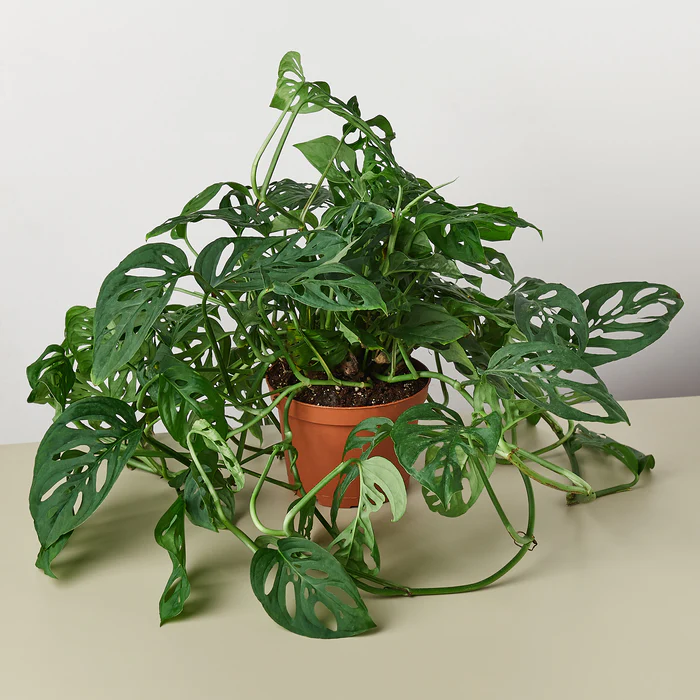Swiss Cheese Plant (Monstera adansonii)
Last updated: August 28,
2025
Care Sheet List
Known for
its distinctive holes (fenestrations) in the leaves, the Swiss Cheese
Plant is a popular and relatively easy-to-care-for climbing
plant. Note that this is not truly a philodendron, but a monstera.
Lighting
The Swiss
Cheese Plant prefers bright, indirect light.
Direct sunlight can
scorch its delicate leaves, while too little light can lead to smaller
leaves
and fewer fenestrations. An east or north-facing window is great, or a
position
a few feet from a south or west-facing window.
Watering
Routine
Water when
the top 1-2 inches of soil feel dry to the touch.
They like consistently
moist but not soggy soil. Water thoroughly until water drains from the
bottom.
Empty any excess water from the saucer. Reduce watering in winter. If
the
leaves start to curl or droop, it's often a sign of thirst.
Fertilizer
Requirements
During the spring
and summer growing season, fertilize your Swiss Cheese
Plant every
2-4 weeks.
- Type: Use a balanced
liquid houseplant fertilizer.
- Commercial Recommendation: Miracle-Gro
Indoor Plant Food (Liquid) or Schultz Liquid Plant
Food are good options. Dilute these commercial concentrates to achieve approximately 50-100 ppm N
in your final solution. This is often equivalent to using them at "half
strength" or "full strength" of the package's recommended dose.
- DIY Fertilizer Suggestion: For robust foliage growth, use your homemade 3-1-2 liquid fertilizer concentrate (High Nitrogen) or a balanced 1-1-1 liquid fertilizer concentrate.
- For 3-1-2 concentrate (30,000 ppm N): Apply at a "Light to Moderate Feeding" rate, using 1.67 ml to 3.33 ml per 1 liter of water (resulting in ~50-100 ppm N). See recipe details.
- For 1-1-1 concentrate (10,000 ppm N): Apply at a "Moderate Feeding" rate, using 10 ml per 1 liter of water (resulting in ~100 ppm N). See recipe details.
- Avoid: Do not fertilize in fall and winter.
Misting
Requirements
Swiss Cheese
Plants love high humidity, which encourages
larger leaves and
more prominent fenestrations. Mist your plant daily or every other day,
especially if your home is dry. A humidifier placed nearby or a pebble
tray can
also significantly increase humidity.
Pot Size
and Soil Type
- Pot Size: Choose a pot
that is 1-2 inches larger in diameter than its
current pot. Since they are climbing plants, providing a moss pole or
trellis for support will encourage vertical growth and larger leaves.
Ensure the pot has drainage holes.
- Soil Type: A well-draining,
airy potting mix is crucial. A mix designed for aroids (a
type of plant family) or a regular potting mix amended with perlite,
orchid bark, or coco coir will work well to provide good aeration and
drainage. Aim for a mix that holds some moisture but doesn't stay
waterlogged.
Pruning
and Maintenance
- Pruning: Swiss Cheese Plants can
become very long and leggy over time. Prune back long vines to
encourage bushier growth. You can cut just above a leaf node (the point
where a leaf emerges from the stem).
- Propagation: Swiss Cheese Plants are
incredibly easy to propagate from stem cuttings. Simply take a cutting
with 2-3 leaves and a node, and place it in water or moist soil. Roots
will often form within a few weeks.
- Toxicity: Keep out of
reach of pets and small children, as Swiss Cheese Plants are considered toxic if
ingested due to calcium oxalate crystals.

